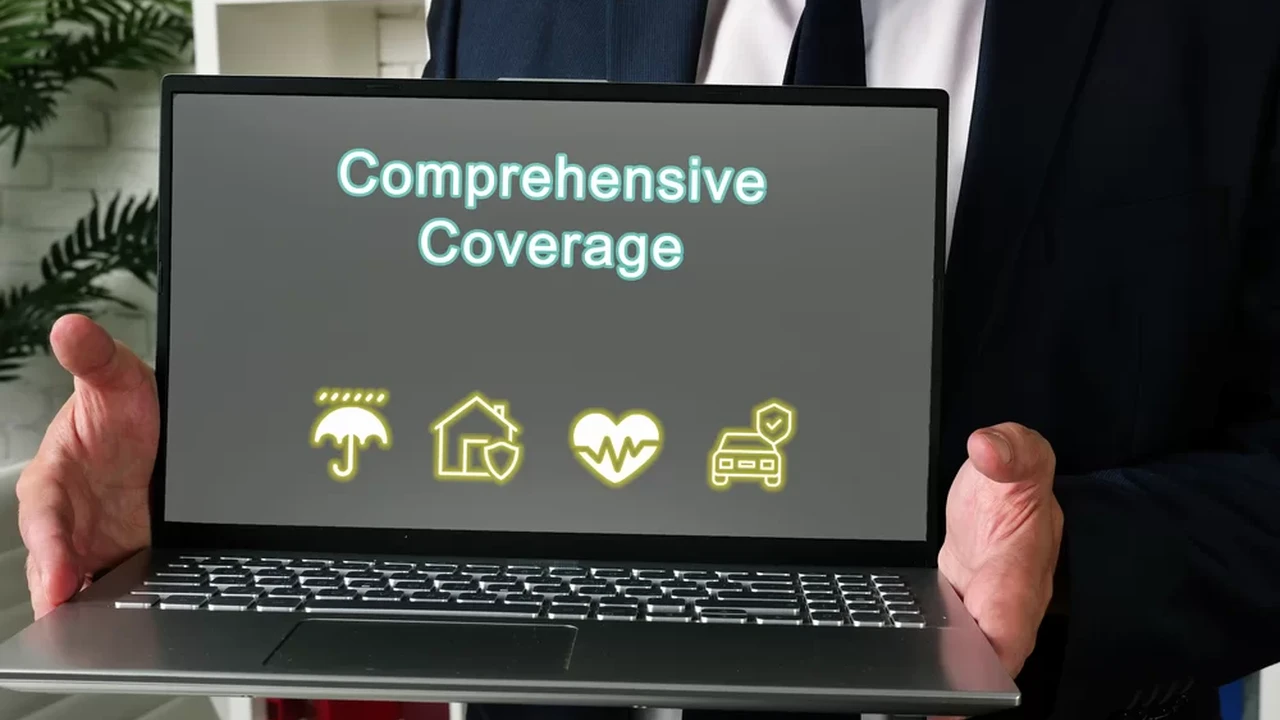Car Insurance for High-Risk Drivers: Finding Affordable Options

Understanding High-Risk Driver Status and Its Impact on Car Insurance Premiums
So, you've been labeled a "high-risk" driver. What does that even mean? Basically, insurance companies see you as more likely to file a claim. This could be due to a history of accidents, speeding tickets, DUIs, or even a combination of these things. The more risk you represent, the higher your premiums will be. Think of it like this: insurance companies are in the business of managing risk, and if you're a high-risk driver, they need to charge you more to cover the potential cost of a claim.
It's frustrating, I know! But understanding why you're considered high-risk is the first step to finding affordable options. Let's break down some common reasons:
- Multiple Accidents: Even if you weren't at fault, multiple accidents can raise red flags.
- Speeding Tickets: A few speeding tickets might not be a big deal, but a pattern of reckless driving is a major concern.
- DUI/DWI: Driving under the influence is a serious offense and will significantly impact your insurance rates.
- Suspended License: Having your license suspended is a huge indicator of risk.
- Young Drivers: Statistically, younger drivers are more likely to be involved in accidents, so they often face higher premiums.
- Lapse in Coverage: A gap in your insurance coverage can also make you a high-risk driver. Insurance companies see this as a sign that you might not be responsible.
Knowing the reason behind your high-risk status allows you to address the issue. For example, if you have a history of speeding tickets, you might consider taking a defensive driving course. This can not only improve your driving skills but also potentially lower your insurance rates.
Finding Car Insurance Companies That Specialize in High-Risk Drivers
Not all insurance companies are created equal! Some specialize in providing coverage for high-risk drivers. These companies understand the unique challenges faced by drivers with less-than-perfect records and are often more willing to offer coverage, albeit at a higher price. Think of them as the specialists in the insurance world for those who've had a few bumps in the road.
How do you find these specialized companies? Here are a few tips:
- Online Research: Use search terms like "high-risk car insurance," "insurance for bad drivers," or "SR-22 insurance" (if required by your state).
- Independent Insurance Agents: These agents work with multiple insurance companies and can help you find the best rates for your specific situation. They're like personal shoppers for insurance!
- State Insurance Department: Your state's insurance department can provide a list of licensed insurance companies that operate in your area.
- Compare Quotes: Don't settle for the first quote you receive. Get quotes from multiple companies to compare rates and coverage options.
Some well-known companies that often cater to high-risk drivers include:
- The General: They heavily advertise to high-risk drivers and often offer competitive rates.
- Direct Auto Insurance: Another company that focuses on providing coverage to drivers with less-than-perfect records.
- Progressive: While not exclusively for high-risk drivers, Progressive often offers competitive rates and a variety of coverage options.
- Safe Auto: Specializes in providing affordable car insurance to drivers who may have difficulty obtaining coverage elsewhere.
Remember to shop around and compare quotes from several companies to find the best deal. Don't just settle for the first offer you get!
Strategies for Lowering Your Car Insurance Premiums as a High-Risk Driver
Okay, so you're a high-risk driver, and your premiums are sky-high. What can you do to bring those costs down? Here are a few strategies to consider:
- Increase Your Deductible: A higher deductible means you'll pay more out-of-pocket if you file a claim, but it also lowers your monthly premium. Just make sure you can afford to pay the deductible if something happens.
- Take a Defensive Driving Course: As mentioned earlier, a defensive driving course can improve your driving skills and potentially lower your insurance rates. Many insurance companies offer discounts for completing these courses.
- Improve Your Credit Score: In many states, insurance companies use your credit score to determine your rates. Improving your credit score can lead to lower premiums.
- Shop Around Regularly: Insurance rates change frequently, so it's a good idea to shop around for new quotes every six months or so. You might be surprised at how much you can save.
- Consider Usage-Based Insurance: Some insurance companies offer usage-based insurance programs that track your driving habits using a mobile app or device. If you're a safe driver, you can earn discounts based on your driving behavior.
- Bundle Your Insurance Policies: If you have multiple insurance policies, such as car insurance and homeowners insurance, consider bundling them with the same company. This can often result in significant discounts.
- Reduce Coverage: While it's important to have adequate coverage, you might be able to lower your premiums by reducing your coverage limits. For example, you could increase your collision deductible or reduce your comprehensive coverage. However, be sure to carefully consider the risks before making any changes to your coverage.
Remember, patience and persistence are key. It might take some time and effort to find affordable car insurance as a high-risk driver, but it's definitely possible!
Specific Car Insurance Product Recommendations for High-Risk Drivers
Let's dive into some specific product recommendations, keeping in mind that availability and pricing will vary depending on your location and driving history. These are examples to illustrate the types of products and features to look for. Always get a personalized quote!
The General: A Basic Option for Immediate Coverage
Product: Minimum Liability Coverage
Use Case: You need to get insured *now* to reinstate your license or avoid penalties. You are primarily concerned with meeting the minimum legal requirements and are willing to accept higher financial risk in case of an accident.
Features: Often accepts drivers with DUIs or multiple violations. Offers immediate online quotes and coverage. Relatively simple policies with limited add-ons.
Pricing: Expect to pay significantly more than the average driver. Minimum liability coverage could start around $150-$300 per month, depending on your record and location. Be sure to compare this to other options, as the ease of access comes at a cost.
Comparison: The General is often more expensive than other options, but it's a good starting point for comparison, especially if you are having trouble getting quotes elsewhere. Consider it a "last resort" option if other insurers decline to offer coverage.
Progressive Snapshot: Usage-Based Insurance for Safe Drivers
Product: Usage-Based Insurance (UBI) Policy with Snapshot
Use Case: You are confident in your safe driving habits (e.g., no hard braking, no late-night driving). You are willing to allow Progressive to track your driving behavior in exchange for potential discounts.
Features: Progressive's Snapshot program uses a plug-in device or mobile app to monitor your driving. Factors considered include hard braking, acceleration, time of day, and mileage. Safe drivers can earn significant discounts (up to 30% or more).
Pricing: The initial premium might be higher than a standard policy, but the potential discounts based on your driving habits can lower your overall cost. The cost of the device is usually included in the policy.
Comparison: Snapshot is a great option if you are a safe driver and willing to share your driving data. However, if you have a history of risky driving behavior, you might not qualify for significant discounts. Be aware that bad driving habits *can* increase your premium.
State Farm Drive Safe & Save: Another Telematics Option with a Focus on Safety
Product: Usage-Based Insurance (UBI) Policy with Drive Safe & Save
Use Case: Similar to Progressive Snapshot, you believe you are a safe driver and want to be rewarded for it. State Farm's program emphasizes safety and offers discounts based on driving habits.
Features: State Farm's Drive Safe & Save uses a mobile app to track your driving behavior. It considers factors like speed, acceleration, braking, and cornering. Focuses heavily on rewarding safe habits and offers personalized feedback to improve driving.
Pricing: Similar to other UBI programs, the initial premium might be comparable to a standard policy, but discounts can be earned based on safe driving. Discounts can be substantial for consistently safe drivers.
Comparison: Drive Safe & Save is a good alternative to Snapshot. The key difference is the emphasis on safety and the personalized feedback provided to drivers. Consider both programs and choose the one that best aligns with your driving style and preferences.
Comprehensive Coverage with a Higher Deductible: Managing Risk and Cost
Product: Comprehensive and Collision Coverage with a $1000 Deductible
Use Case: You want to protect your vehicle from damage caused by accidents, theft, vandalism, or natural disasters, but you are willing to absorb a higher initial cost in the event of a claim to lower your monthly premiums.
Features: Comprehensive coverage protects against damage not caused by collisions, such as hail, theft, or vandalism. Collision coverage protects against damage caused by accidents, regardless of fault. A higher deductible (e.g., $1000) lowers the monthly premium but requires you to pay more out-of-pocket if you file a claim.
Pricing: The monthly premium will be significantly lower than with a lower deductible (e.g., $250 or $500). However, you need to be prepared to pay the $1000 deductible if you need to file a claim.
Comparison: This strategy is suitable for drivers who are comfortable managing a higher level of financial risk. It's not recommended for drivers who are unable to afford the higher deductible in the event of an accident.
Understanding SR-22 Insurance and Its Requirements for High-Risk Drivers
An SR-22 is not actually insurance itself, but rather a certificate of financial responsibility required by some states after certain driving offenses, such as a DUI/DWI, driving without insurance, or causing an accident without insurance. It proves to the state that you have the minimum required car insurance coverage. Think of it as a "proof of insurance" on steroids.
If you're required to file an SR-22, you'll need to contact your insurance company and request that they file it with the state on your behalf. Not all insurance companies offer SR-22 filings, so you might need to shop around. Expect to pay a filing fee, which is usually around $25-$50.
It's important to maintain continuous SR-22 coverage for the required period (usually three years). If your insurance policy lapses or is canceled, your insurance company is required to notify the state, which can result in a suspended license.
Finding an insurance company that offers SR-22 filings and provides affordable rates can be challenging. Be sure to shop around and compare quotes from multiple companies. Some companies that commonly offer SR-22 filings include The General, Direct Auto Insurance, and Progressive.
Long-Term Strategies for Improving Your Driving Record and Lowering Insurance Costs
While finding affordable insurance now is important, it's also crucial to focus on long-term strategies to improve your driving record and reduce your insurance costs in the future. Here's what you can do:
- Drive Safely: This might seem obvious, but it's the most important thing you can do. Avoid speeding, reckless driving, and driving under the influence.
- Take a Defensive Driving Course: As mentioned earlier, a defensive driving course can improve your driving skills and potentially lower your insurance rates.
- Maintain a Clean Driving Record: Avoid getting any new tickets or accidents. Over time, your driving record will improve, and your insurance rates will decrease.
- Improve Your Credit Score: As mentioned earlier, improving your credit score can lead to lower insurance premiums in many states.
- Shop Around Regularly: Insurance rates change frequently, so it's a good idea to shop around for new quotes every six months or so. You might be surprised at how much you can save.
- Be Patient: It takes time to improve your driving record and lower your insurance costs. Don't get discouraged if you don't see results immediately.
Navigating the Legal Requirements for Car Insurance in Your State
Every state has its own minimum car insurance requirements. It's crucial to understand these requirements and make sure you have adequate coverage. Failing to meet these requirements can result in fines, license suspension, or even jail time.
The most common types of car insurance coverage include:
- Liability Coverage: This covers damages you cause to others in an accident. It includes bodily injury liability (which covers medical expenses) and property damage liability (which covers damage to vehicles or other property).
- Uninsured/Underinsured Motorist Coverage: This covers your medical expenses and vehicle damage if you're hit by an uninsured or underinsured driver.
- Personal Injury Protection (PIP): This covers your medical expenses and lost wages, regardless of who is at fault in an accident.
- Collision Coverage: This covers damage to your vehicle caused by an accident, regardless of who is at fault.
- Comprehensive Coverage: This covers damage to your vehicle caused by events other than collisions, such as theft, vandalism, or natural disasters.
The minimum liability coverage requirements vary by state. For example, some states require only $25,000 in bodily injury liability coverage per person and $50,000 per accident, while others require much higher amounts. It's generally recommended to have more than the minimum required coverage to protect yourself from potential lawsuits.
You can find your state's minimum car insurance requirements on your state's Department of Motor Vehicles (DMV) website or by consulting with an insurance professional.
Alternative Transportation Options for High-Risk Drivers
If you're struggling to find affordable car insurance, or if your license is suspended, you might consider alternative transportation options. These options can help you get around without driving your own car and can save you money on insurance, gas, and maintenance.
Some alternative transportation options include:
- Public Transportation: Buses, trains, and subways are available in many cities and can be a cost-effective way to get around.
- Ride-Sharing Services: Uber and Lyft are popular ride-sharing services that can provide convenient transportation.
- Biking or Walking: If you live in a walkable or bike-friendly area, biking or walking can be a great way to get around.
- Carpooling: Carpooling with coworkers or friends can save you money on gas and reduce traffic congestion.
While alternative transportation options might not be suitable for everyone, they can be a valuable alternative for high-risk drivers who are struggling to afford car insurance or who have a suspended license.
:max_bytes(150000):strip_icc()/277019-baked-pork-chops-with-cream-of-mushroom-soup-DDMFS-beauty-4x3-BG-7505-5762b731cf30447d9cbbbbbf387beafa.jpg)






